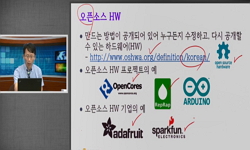This paper proposes a fast-processing and low-cost hardware multiple input multiple output (MIMO) channel emulator. The channel emulator is an important component of hardware-based simulation systems. The novelty of this work is the use of sharing and...
http://chineseinput.net/에서 pinyin(병음)방식으로 중국어를 변환할 수 있습니다.
변환된 중국어를 복사하여 사용하시면 됩니다.
- 中文 을 입력하시려면 zhongwen을 입력하시고 space를누르시면됩니다.
- 北京 을 입력하시려면 beijing을 입력하시고 space를 누르시면 됩니다.


Compact Hardware Multiple Input Multiple Output Channel Emulator for Wireless Local Area Network 802.11ac
한글로보기부가정보
다국어 초록 (Multilingual Abstract)
This paper proposes a fast-processing and low-cost hardware multiple input multiple output (MIMO) channel emulator. The channel emulator is an important component of hardware-based simulation systems. The novelty of this work is the use of sharing and pipelining functions to reduce hardware resource utilization while maintaining a high sample rate. In our proposed emulator, the samples are created sequentially and interpolated to ensure the sample rate is equal to the base band rate. The proposed 4 × 4 MIMO requires low-cost hardware resource so that it can be implemented on a single field-programmable gate array (FPGA) chip. An implementation on Xilinx Virtex-7 VX980T was found to occupy 10.47% of the available configurable slice registers and 12.58% of the FPGA's slice lookup tables. The maximum frequency of the proposed emulator is 758.064 MHz, so up to 560 different paths can be processed simultaneously to generate 560 × 758 million × 2 × 32 bit complex-valued fading samples per second.
동일학술지(권/호) 다른 논문
-
WiFi-Based Home IoT Communication System
- The Korea Institute of Information and Commucation Engineering
- Chen, Wenhui
- 2020
- SCOPUS,KCI등재
-
Event Log Validity Analysis for Detecting Threats by Insiders in Control System
- The Korea Institute of Information and Commucation Engineering
- Kim, Jongmin
- 2020
- SCOPUS,KCI등재
-
Route Optimization Scheme for Mobile Content Sources in Content Centric Networking
- The Korea Institute of Information and Commucation Engineering
- Lee, Jihoon
- 2020
- SCOPUS,KCI등재
-
Comparison of Deep-Learning Algorithms for the Detection of Railroad Pedestrians
- The Korea Institute of Information and Commucation Engineering
- Fang, Ziyu
- 2020
- SCOPUS,KCI등재




 ScienceON
ScienceON DBpia
DBpia







